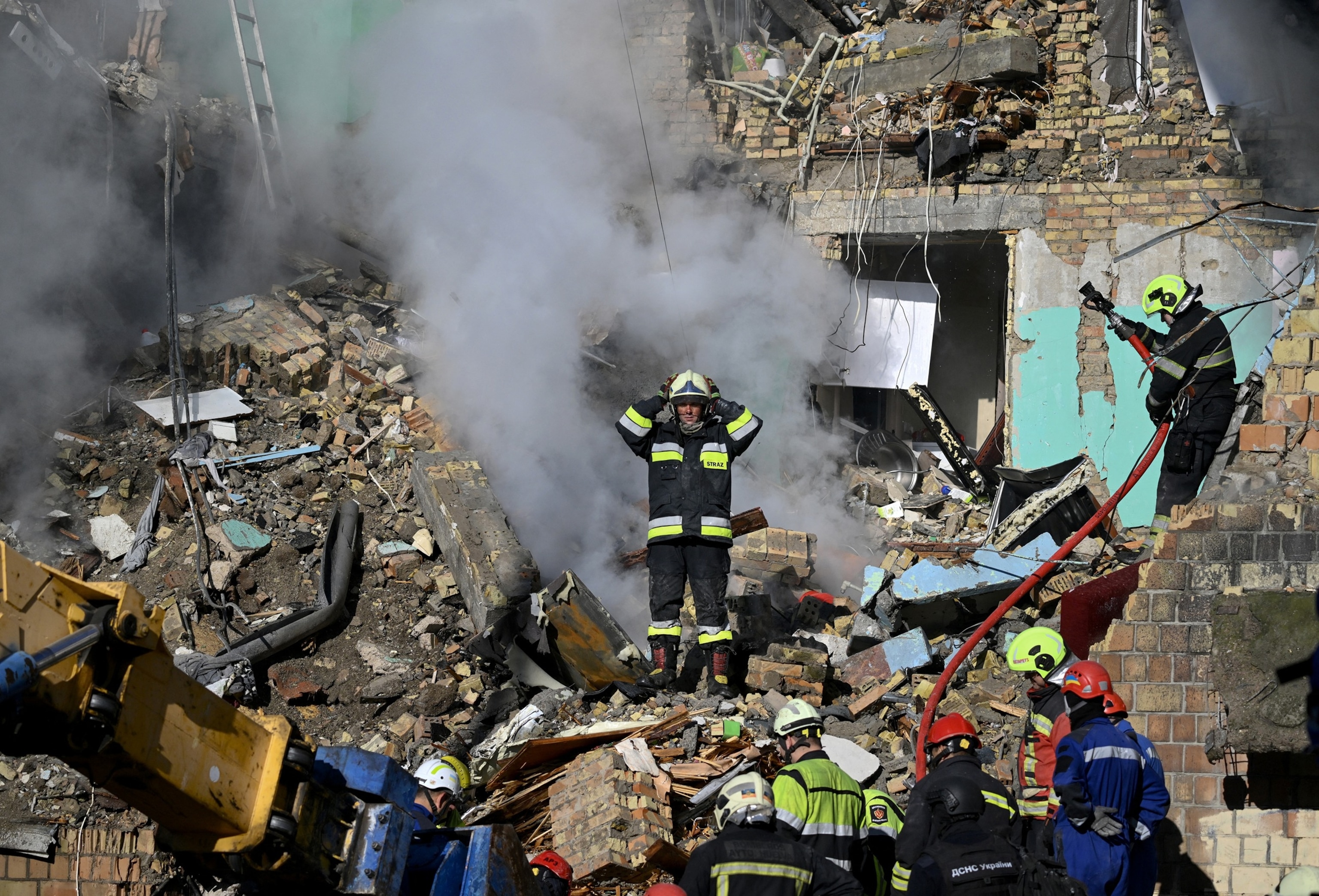Russia Launches Massive Drone and Missile Attack on Kyiv
Russia unleashed a large-scale drone and missile assault on Kyiv, causing widespread damage and civilian casualties as Ukrainian air defenses struggled to repel the barrage.

A wave of Russian drones and missiles struck Kyiv early Sunday, marking one of the most intense attacks on the Ukrainian capital in recent months. Ukrainian officials reported that dozens of explosive drones and cruise missiles targeted residential neighborhoods, energy infrastructure, and government buildings, resulting in significant destruction and civilian casualties.
The Ukrainian Air Force stated that its air defense systems intercepted a majority of incoming projectiles, but several managed to penetrate the city’s defenses, causing fires and structural damage. Mayor Vitali Klitschko confirmed that at least 12 civilians were killed and more than 30 injured, with emergency services working through the night to rescue people trapped in collapsed buildings. "We are facing a new level of terror," Klitschko said in a televised address, urging residents to remain vigilant and seek shelter during air raid warnings.
Escalation and International Response
The timing of the attack coincides with heightened tensions following recent Ukrainian strikes on Russian border towns and military installations. Western governments condemned the Russian assault, with Germany’s Foreign Minister labeling it "a blatant violation of international law and an attack on innocent civilians." The United States reiterated its support for Ukraine, announcing expedited delivery of air defense equipment and additional humanitarian aid.
Independent analysts note that the Russian military has increasingly relied on Iranian-made Shahed drones and domestically produced cruise missiles to overwhelm Ukrainian defenses. Satellite imagery reviewed by European intelligence agencies showed launch sites in Russia’s Bryansk and Kursk regions, supporting Ukrainian claims that the attack originated from across the border.
Civilian Impact and Information Warfare
Local hospitals reported a surge in admissions, with medical staff struggling to cope with the influx of wounded. Power outages affected large swathes of Kyiv, and water supplies were disrupted in several districts. Ukrainian social media channels circulated images of destroyed apartment blocks and emergency workers sifting through rubble, while Russian state media downplayed civilian casualties and portrayed the operation as targeting "military infrastructure."
Several international outlets highlighted the use of misleading narratives by Russian authorities, including claims that Ukraine had staged the destruction to garner Western sympathy. Independent fact-checkers found no evidence to support these assertions, instead documenting the direct impact of Russian munitions on civilian areas.
Strategic Implications
Military experts suggest the attack is part of a broader Russian strategy to erode Ukrainian morale and pressure Western allies to reconsider support. The Institute for the Study of War noted that the scale and timing of the assault appear designed to coincide with diplomatic efforts by Ukraine to secure additional military aid. Ukrainian officials warned that continued attacks on urban centers could trigger a new wave of internal displacement, further straining humanitarian resources.
As Kyiv recovers from the latest bombardment, residents express resilience but also growing anxiety over the future. "We will not be broken," said one survivor interviewed by France 24, "but we need the world to stand with us now more than ever."